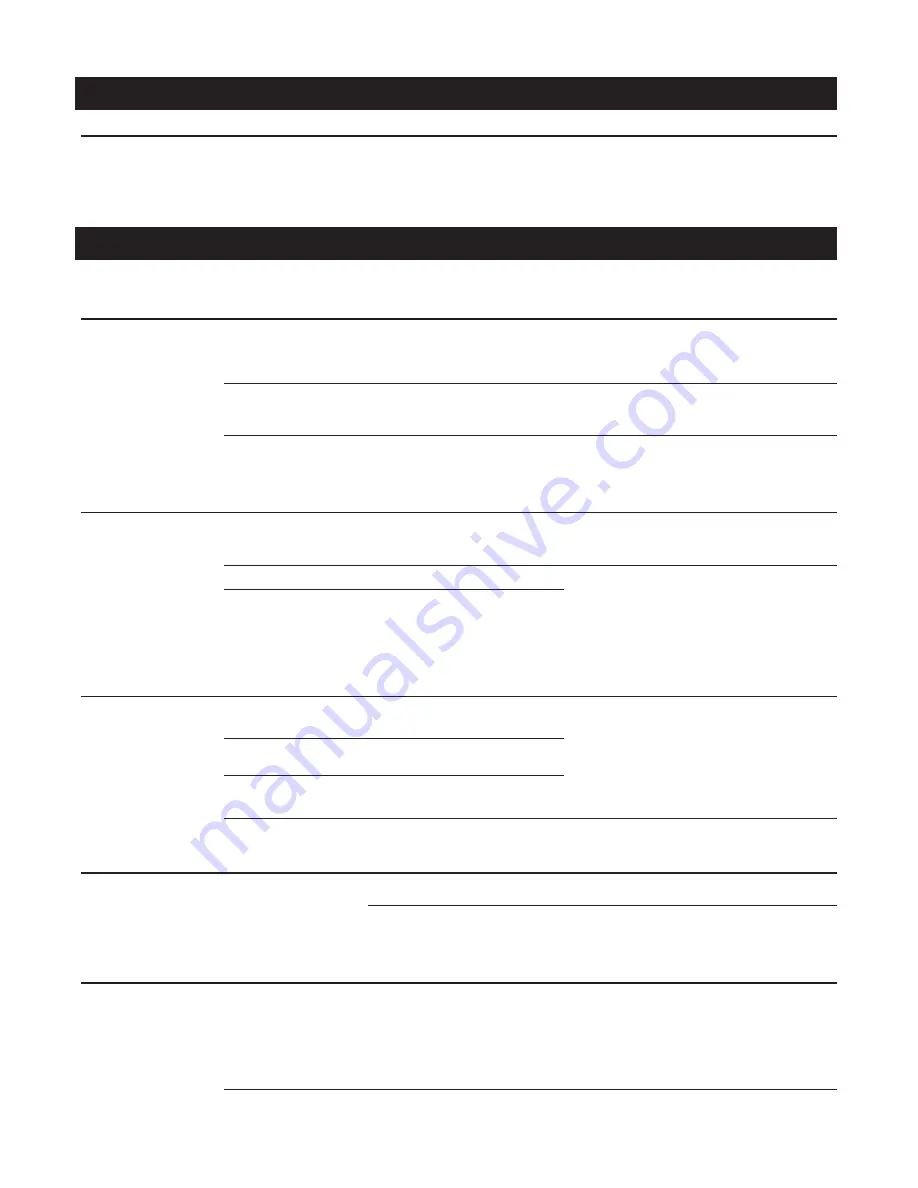
5
Provide Filtration/Circulation
To manage:
You need to:
Circulation
Follow the manufacturer’s directions for keeping the circulating pump in good working order and operate it at least
six hours a day.
Filtration
Check the pool’s filter periodically and clean it as recommended by the manufacturer.
Troubleshooting Guide
Use the guide below to correct common pool issues. For further assistance, consult your Nature
2
dealer or call us at 1-800-822-7933.
Problem
What to look for
Treatment
Cloudy Water
Frequently caused by
improper start up. See
section on Start Up.
Poor filtration
Slow filter turnover rates.
1. Backwash and clean filter.
2. Run filter for 24 hours.
3. Increase run time per day.
Algae growth
Hazy pool water; may have slightly
green appearance.
Shock water (with dealer’s guidance)
and brush pool walls.
Unbalanced water
1. High Hardness.
2. High TDS (total dissolved solids).
3. High pH.
4. High total alkalinity.
Balance the pool water.
Algae
Green algae
Pea green colour; attaches to pool
walls; sometimes colours the entire
body of water.
1. Check pH and adjust if necessary
2. Shock water and brush pool walls.
3. Repeat steps 1 and 2 until algae is gone.
Black algae
Black spots on pool walls.
1. Brush affected areas.
2. Shock water.
3. Add algaecide.
4. Vacuum pool.
5. Repeat steps 1 through 4 until algae is gone.
Mustard algae
Yellow or brown film on steps or walls.
Note:
Regular algaecide treatments are recommended for outdoor pools that experience persistent algae problems. Do
not use algae treatments containing either copper or sodium bromide.
Stains
Blue/green
Copper or iron from pool equipment
corrosion or water supply.
1. Adjust pH and total alkalinity to ideal ranges.
2. Vigorously brush stained areas.
3. Add sequestrant.
4. Run filter.
5. Twelve hours later, shock the pool.
6. Test and balance water.
7. Test pool water for dissolved metals.
Red/brown
Iron or manganese from equipment
corrosion or water supply.
Black
Manganese in water supply.
Metal tarnishing
High native material content in water;
unbalanced water.
Clean with soft cloth and mild detergent. Test
water for minerals; use a sequestrant; maintain
water balance.
Scale
Crusty deposits on pool
surfaces
High pH and high total alkalinity.
Adjust pH and total alkalinity to ideal ranges.
High TDS (total dissolved solids) or high
hardness levels.
1. Replace a volume of pool water with water
low in calcium and dissolved solids.
2. Use sequestrant to prevent scale buildup if
high hardness levels are a continuing problem.
Equipment
The purifier leaks
A. O-ring missing or improperly seated;
or
B. Faulty plumbing.
Lubricate O-ring with Teflon or silicone lubricant.
Note: Do not use petroleum-based lubricants
(will void warranty). Be sure O-ring is seated
properly before securing housing cap.
Repair source of leak in plumbing.
No flow to purifier
Dirty filter (one indication: pressure
55-69 kPa higher than normal).
Clean or backwash filter so operating pressure
is always within 48 kPa of a new filter.








